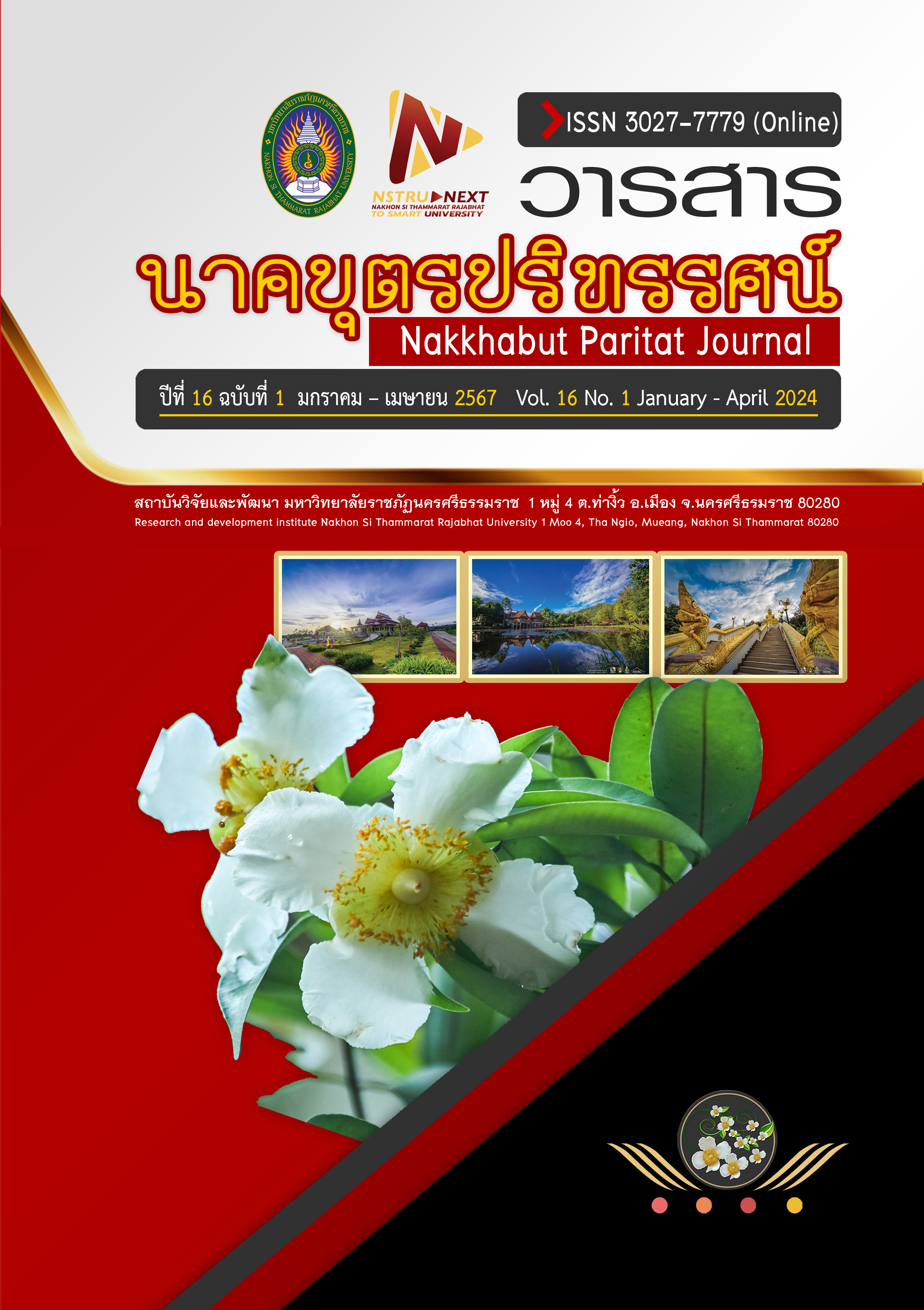The Relationship between People and the Forest of Santirat-Chao Pha Community, Palian Sub-district, Palian District, Trang Province.
Main Article Content
Abstract
This research article presents the relationship between people and forests of Santirat-Chao Pha community, Palian sub-district, Palian district, Trang province. This qualitative research used grounded theory methodology, document study, and field studies using interviews, focus groups, surveys, and observation to verify the information. The group of key informants consisted of 17 people, including community leaders and forestry officials, local scholars, and members of the Maniq ethnic group. Analyze data to create conclusions. The analysis method used is deductive content analysis. The results of the study found that the relationship between people and the forest in the Ban Santirat- Chao Pha area can be divided into a relationship in which people take advantage of the forest area. There were 2 main utilization characteristics; 1) the use of land in forest areas is to grow monoculture crops such as rubber and palm plantation. In addition, it was found that the villagers planted crops in combination. It is also found that it is often a characteristic of fruit orchards that are grown in a variety of types, which has the characteristics of a mixed orchard. , and 2) Utilizing forest and wildlife resources, it was found that villagers find forest products such as wild fruits (Champada, Sator), wild bamboo shoots, grass flowers, wild honey, lilyfish, snails, as well as animals, especially fish, frogs, and shellfish. It was found that here there is still the existence of 2 Maniq ethnic groups, namely the Khlong Tong group and the Khao Hua Sum group. Both Maniq groups continue to make use of forest areas in various ways, including building habitats, food sources, medicinal plants, and spiritual values. Therefore, it is empirical evidence that the forest area in this area is still fertile.
Article Details

This work is licensed under a Creative Commons Attribution-NonCommercial-NoDerivatives 4.0 International License.
References
Glaser, B. G., & Strauss, A. L. (1967). The Discovery of Grounded Theory: Strategies for Qualitative Research. Chicago: Aldine Publishing Company.
Interviewer 1. (2022). Interview, 23 January 2022. (in Thai)
Interviewer 14. (2022). Interview, 14 October 2022. (in Thai)
Interviewer 18. (2023). Interview, 22 January 2023. (in Thai)
Interviewer 28. (2023). Interview, 9 April 2023. (in Thai)
Interviewer 30. (2023). Interview, 18 June 2023. (in Thai)
Janthawanit, S. (2016). Data Analysis in Qualitative Research. Bangkok: Chulalongkorn University. (in Thai)
Khunweechuay, N., Roongtawanreongsri, S., & Hatta, K. (2022). Cultural Forest Ecosystem Services of the Maniq Indigenous People in Southern Thailand. Human Ecology, 50(3), 559–576.
Khunweechuay, N., Roongtawanreongsri, S., & Hatta, K. (2023). Forest Ecosystem Services and The Maniq People’s Settlement Rotation Pattern in Southern Thailand. Journal of Sustainability Science and Management, 18(1), 39-61.
Maneenoon, K., Sirirugsa, P., & Sridith K. (2008). Ethnobotany of Dioscorea L. (Dioscoreaceae), a major food plant of the Sakai tribe at Banthad Range, Peninsular Thailand. Journal of Plants, People and Applied Research, 6(1), 385–394.
Millennium Ecosystem Assessment (MA). (2005). Ecosystems and human well-being: A framework for assessment. USA: Island Press.
Princess Maha Chakri Sirindhorn Anthropology Centre. (2023). Maniq: Ethnic groups in Thailand. Retrieved 2023, June 17, from https://ethnicity.sac.or.th/database-ethnic/200/ (in Thai)
Sektheera, W. (2014). The Manni Ethnic Group Settlements and Habitats. (Master of Arts Program in Vernacular Architecture). Silpakorn University, Department of Architecture. (in Thai)
Sinbumroong, A. (2009). Structure and Floristic Composition of Wet Seasonal Evergreen Forest at Khao Ban Thad Wildlife Sanctuary, Trang Province. (Master of Science Forestry). Kasetsart University, Department of Forest Biology, Forest Biology. (in Thai)
Udomsri, P., & Ardsmiti, N. (2021). The Maniq’s Quality of Life with Thai Identification Card and Welfare Right. In Full paper. The 2021 National Population Conference, (p.161). Thai population association. (in Thai)
Wiriyaromp, W., Naksing, P., & Phonphet, C. (2015). Social and Cultural Changes Among the Sakai Ethnic: A Case Study of the Sakai Ethnic in Tamot District, Phatthalung Province. Parichart Journal, 27(20), 82-103.(in Thai)


